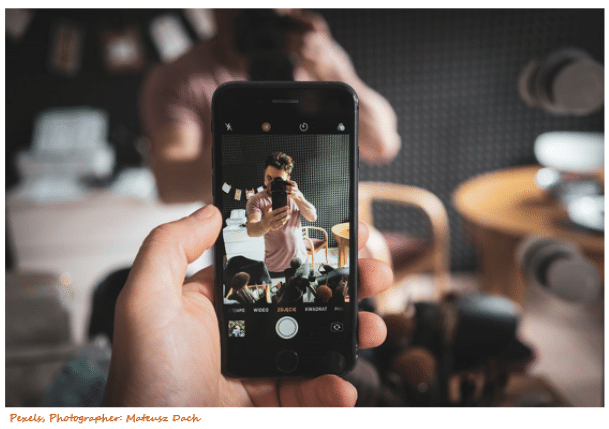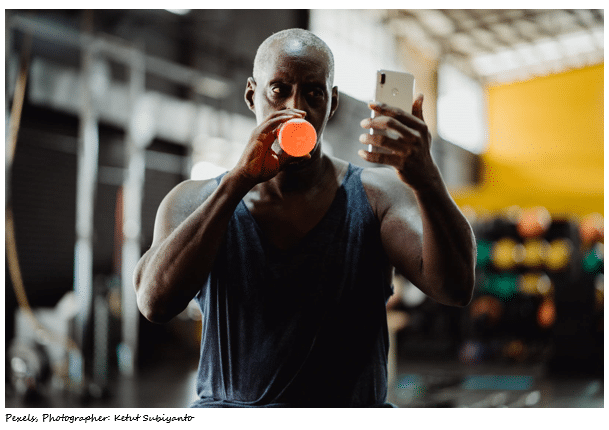Become a micro-influencer and partner with key brands by maintaining a professional, consistent, and growing social media presence. The importance of influencer marketing as part of a company’s social media marketing strategy continues to grow. Demonstrating proof of your ability to influence through engagement and conversion are key, so define your niche and keep developing your presence. Follow these four steps and join the influential ranks of today’s marketing pros.

If you are interested in becoming a micro-influencer, you likely know your prospective role and how it fits into a brand’s marketing strategy. You are also probably steadily building your following, connecting through your authenticity and online presence, and actively improving your creative skills along the way.
Hint: If you aren’t, you should be!
The job is fun, creative, and so much more than simply wearing something well; it’s an increasingly important part of brand marketing. Micro-influencers connect the brands with engaged followers, and they make this happen on top of a solid business foundation. Your ability to develop your bio, create content, develop influence, and grow your engagement rate is what leads to ongoing brand partnerships and an income you can count on.
How do you become a micro-influencer? Follow these 4 Easy Steps
- Develop your online personality, niche, and following.
- Set up your micro-influencer business.
- Develop your resume to reflect influencer marketing.
- Target key brands and influencer networks
Influencer marketing platforms are part of a growing, fast-paced industry. Collaborating with brands is exciting, and there is plenty of room for you and your skills to cash in on this $15 billion dollar industry!
Collaborating with influencers is a recommended corporate business investment into the growth and development of their brands. It involves every social media platform, and millions of followers are positively influenced every minute.
This isn’t simply selfies & hashtags. This serious business-to-brand marketing is part of the marketing plans for nearly every product or service. Brands are looking for higher engagement, and many want the opportunity to engage with your audience.
As an entrepreneur entering this world, you must have goals and a business strategy. Let’s get you there.
How micro-influencers reach their target audience:
1) Develop your online personality, niche, and following
Micro-influencers are different than brand ambassadors.
This role is as much about identifying with a brand as it is about YOU being a brand yourself… who happens to wear or utilize a product well because of who YOU are.
Building an influencer career and reaching micro-influencer status requires a strong, engaged relationship with your social media followers.
Continue developing your personal brand and your social media presence.
- KEY: Be sure AI identifies YOU as a genuine influencer
- Continue developing your online presence.
- Continue developing your online personality and influencer profile.
- Remain authentic, with an evident, consistent message and quality content.
- Ensure your following clearly knows who you are, what you support, and why.
- Ensure your social media accounts provide coordinated messaging.
- Grow your followers to 20,000, then 50,000, then 100,000+
- Be sure like-minded people can find and connect with you to become that loyal following.
- Demonstrate your improving, effective storytelling skills and abilities.
- Show consistent content creation, expansion, and growth.
- Use only high-quality imagery, video, and sound.
- Find what you are passionate about and tag related brands.
- Take that a step further and tag brands you would like to represent & develop story lines for them.
- Create or support online events with other influencers.

2.) Set up your micro-influencer business
It doesn’t need to be complicated, but you must put effort into understanding the prospective legalities and tax requirements, and you must have a basic business plan.
If this sounds overwhelming, at the very least, you need a method of billing, and you need a method of accepting a manufacturer’s payment. Consider these your first steps and most basic guide to becoming a small business owner.
Create a business plan
~ Set SMART goals, timing, and expectations for your business.
~ Lay out your initial cash flow plans. (Not every Instagram post pays the bills, right?)
Understand Pertinent Legalities
~ Determine what business structure is best for you.
~ If relevant, know what FTC guidelines must be followed.
~ Understand tax basics. (Google this. Learn. It’s not as complicated as much as it’s an investment in You.)
Scheduling – Know where you are willing to work and when BEFORE you start reaching out to brands.
Tools / workstation
~ Be prepared to create quality content. (Delivering professional-grade imagery and video content is critical to your success.)
Pricing – Have an idea of your value vs. time spent. Know what top brands pay. Know where you fit. (You worked hard to build a business, and you are leveling up. You are not free.)
Market yourself
~ Build your business network. (Being in business is more than having followers on social media. You need connections. Be nice. Ask questions. Offer support. In other words, use those influencing skills and create a business network!)
~ Join and participate in influencer networks. (When it comes to getting a job, sometimes brands and audiences cross. The more people you know and the more exposure you get the better.)
Business knowledge
~ Remain current. Know trends and what is working to reach your brand’s targeted consumer. Read. (Aligned with their brand today, helps you start land a job tomorrow.)
~ Know how artificial intelligence can support you and how it affects and/or supports your key brands. (AI is HOT, and it’s not going away. Don’t let it replace you. Use it to enhance your brand relationships by making it part of your strategy.)

3.) Develop your resume to reflect influencer marketing
Yep. Your resume. Know what skills and experience you bring. (Use your brand awareness skillset when crafting your resume. Use it to engage with your followers – i.e.: marketing teams – and make sure the brands easily identify with you. It’s simply a different type of marketing, right?!)
Your resume can be in a standard 1-page format backed up by pictures, or it can take on any creative format. Just keep it simple and easy to share and follow.
Following this POV, create your resume the way you create your content!
Consider yourself a brand, and summarize your development and your expectation of future growth as a mega influencer.
~ Create your personal brand storyline, and share your facts about engagement and conversion.
~ Demonstrate your authenticity, consistency, and communication skills.
For example:
Show how your connection with consumers built trust on TikTok and your similarities to successful micro-influencers on Instagram.
If you have brand relationships of any size, use them to demonstrate how you became an Instagram micro-influencer and share feedback from your audiences.
Show off your effective storytelling skills using various types of content.
~ Show how you can connect many brands to consumers with high-quality social media content.
~ Using a timeline, show how you took your social media profile, built a loyal following, and went from creating content to making money on Instagram.
~ Tag the brands and show your understanding of the process with examples of how you can drive business as part of their marketing campaigns and create a positive ROI.
~ Provide examples of driving high engagement through your following on social media, especially as compared to other influencers in your niche.
~ Show off your highly targeted efforts in a particular niche vs. a nano influencer.
~ Make your content come alive!
For example:
Share posts on Instagram showing how becoming an influencer allowed you to affect consumer buying decisions.
Your social media analytics
~ Pull analytics, especially from recent brand sponsorships, sharing positives and growth.
Your online persona
~ Show them who you are through various forms of marketing.
~ Show them you remain consistent across platforms.
~ Tell them about your social media following.
How you set up your business
~ The fact that you set up a business is a great story in itself.
~ Describe your decision-making process a professional collaborator.
Create a preplanned storyline and content
~ Relate images and video to their product and the industry.
~ Share your creative ideas and the impact you make as an influencer in your niche.
Marketing experience – Share any experience demonstrating knowledge of their processes and objectives.
Teamwork
You are collaborative and play well with others. Discuss who you partnered with in the past, what you learned, end with a positive result.

4.) Target key brands and influencer networks
~ Determine your target brands. Who do you use? Start networking and build out creative. Connect with them, and get feedback.
Seek out additional opportunities. Craft a story and sell them on your value.
Brands often work with groups of influencers who can impact different audiences.
~ Look at brands with no online marketing.
~ Look at brands who already work with influencers.
~ Look at brands only seen collaborating with celebrities.
Once brands select you as a partner
- Deliver high-quality content on your social media platforms.
- Remember, collaboration throughout the brand campaigns is key.
- Keep on top of the storyline and results.
- OVER-DELIVER. Your reputation is essential.
The competitive landscape of the influencer market is forever changing and very bright.
Brands want to partner, and marketing teams routinely work with groups of influencers who can impact different audiences. Micro-influencers are affordable, increase reach and maximize engagement with changeable audiences. Help brands find you.
Think long-term. Think positively.
You may be the next chapter in their brand story.
Take your first step. Find brands you want to partner with. and start using your voice. Talk with your loyal and engaged audience about your inspiration and what draws you to these products. Expand the relationship with your audience into other social circles. Allow the brands to see you as the businessperson you are as you continue creating the story you want to tell them. As always – You got this.

0 Comments